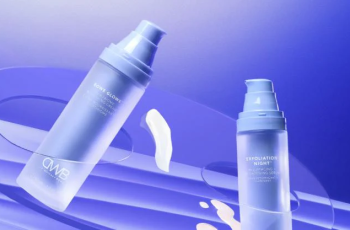
Everyone loves a multi-tasking skincare product—an ingredient that boosts the effects of others and shortens the time it takes to apply a serum (without sacrificing that desired glow).
Whether you’re a skincare expert or just interested in learning about powerful ingredients, you’ll want to know all the benefits of niacinamide for your skin. Here, experts explain its simple application, gentle effects, and huge benefits for your skin.
What is niacinamide?
Niacinamide (also known as niacinamide) is a form of vitamin B3. “Also known as niacin, it is a nutrient that is essential for the development and function of cells in the body,”
explains Dr. Annie Gonzalez, M.D., a board-certified dermatologist at Riverchase Dermatology Center in Miami. Niacin is found in foods like chicken breast, tomato sauce, salmon, and brown rice, and helps the body convert the food you eat into energy, she explains.
But there are many benefits to applying vitamin B3 to your skin. “Just as cells in the body use vitamin B3 to improve their function, the skin uses it to optimize various processes, such as repairing damaged DNA, regenerating cellular energy, and reducing UV radiation,” explains Dr. Gonzalez.
Benefits of Niacinamide
Not only does niacinamide regenerate from within, it also gives the skin new elasticity.
It improves skin tone and fades dark spots.
If you have dark spots, sun damage, or age spots, you should cover them. “At certain concentrations, niacinamide may be able to block the enzyme melanin that causes pigmentation, thereby improving skin tone,” says Dr. Gonzalez.
A 2016 study in the Journal of Drugs in Dermatology tested a product containing a combination of skin brighteners, including retinol, the antioxidant resveratrol, and niacinamide.
The researchers concluded that after four weeks of use, hyperpigmentation was reduced, skin clarity improved, and skin tone was even.
It soothes acne.
Niacinamide can help balance oil and sebum production, reducing breakouts, says Dr. Purvisha Patel, a board-certified dermatologist and founder of Visha Skincare.
Plus, it’s anti-inflammatory, making it great for soothing acne spots and reducing redness. Previous studies have also shown that niacinamide gel is as effective as topical antibiotics in treating acne.
It fights harmful stressors.
UV rays, pollution, stress, lack of sleep, and other factors create free radicals (unstable molecules) that damage healthy skin cells. “This can lead to premature signs of aging, such as discoloration and wrinkles,” says Dr. Gonzalez.
Niacinamide has antioxidant properties that can protect the skin from damage and even partially reverse that damage.
It boosts hydration.
“When combined with common moisturizing ingredients like glycerin and hyaluronic acid, it can enhance the moisturizing effects of a product,” says Dr. Gonzalez.
It also supports the production of ceramides, the skin’s natural oils, which strengthen the skin barrier, thereby preventing water loss and the penetration of potential irritants. Benefits: Your skin is less sensitive and less prone to sensitization.
It soothes irritation.
One of the biggest benefits of niacinamide is that it supports potentially irritating anti-aging products that promote skin cell turnover, including retinol and alpha hydroxy acids (AHAs) like glycolic acid.
“It soothes the skin and reduces irritation caused by aggressive exfoliation,” says Dr. Patel.
Niacinamide side effects
The good: Niacinamide is particularly gentle. “It’s a very safe ingredient. It doesn’t cause irritation, and I haven’t seen any patients who have an intolerance to it,” says Angela Lamb, MD, associate professor in the department of dermatology at Mount Sinai in New York City.
People with sensitive skin, such as those with rosacea, can also use niacinamide. It’s even often added to rosacea moisturizers due to its anti-inflammatory properties.
How to use niacinamide in your skincare routine
When you buy it, look for a serum or moisturizer with 2 to 10 percent niacinamide, Dr. Gonzalez advises. How to use it: After cleansing, apply an alcohol-free facial toner. Follow with an active anti-aging product (like retinol, vitamin C, or alpha hydroxy acid), and finish with niacinamide.
If you use a serum, you can mix it with your favorite moisturizer and use it at the same time, recommends Gonzalez. Apply it to the face, neck, and eyes to soothe and brighten the skin. Not sure which product to use?
The Ordinary Niacinamide 10% + Zinc 1%
La Roche-Posay Soothing Liquid Moisturizer
INKEY List Niacinamide Oil Control Serum
CeraVe PM Facial Moisturizing Lotion

